Promethazine-Tetraphenyl Boron(III) Modified Carbon Paste Electrode for the Determination of Promethazine Hydrochloride ()
1. Introduction
Promethazine hydrochloride [N,N-dimethyl-1-(10H-phenothiazine-10-yl)propan-2-amine] hydrochloride, belonging to phenothiazine group (Scheme 1), is widely used as antihistaminic, sedative, antiemetic, antipsychotic, analgesic and anticholinergic drug.
Several methods have been reported for the quantitative determination of promethazine in pure solution and/ or in pharmaceutical preparations. These methods were mainly chromatographic which, in spite of their good sensitivities, are very expensive, time consuming and require special training. They include LC-MS [1], HPLC [2-7], GLC [8-10], turbidimetry [11], high performance capillary electrophoresis [12,13], nephelometric and conductmetric titrations [14,15], chemometric calibration [16], (square wave adsorptive [17]; anodic striping [18]; differential pulse adsorptive [19,20]; cyclic [21,22]) voltamertic methods of analysis, PVC membrane potentiometry [23,24] and UV-visible spectrophotometry [25-31].
In the present work, a new chemically modified carbon paste electrode for Promethazine cations was constructed and its performance characteristics were studied. The electrode was successfully used for the determination of Pm.Cl in pure solution and in pharmaceutical preparations.
2. Experimental
2.1. Apparatus
Potentiometric and pH measurements were carried out by using HANNA pH-mV meter model 8519, a Techne circulator thermostat Model C-100 to control the tempera-
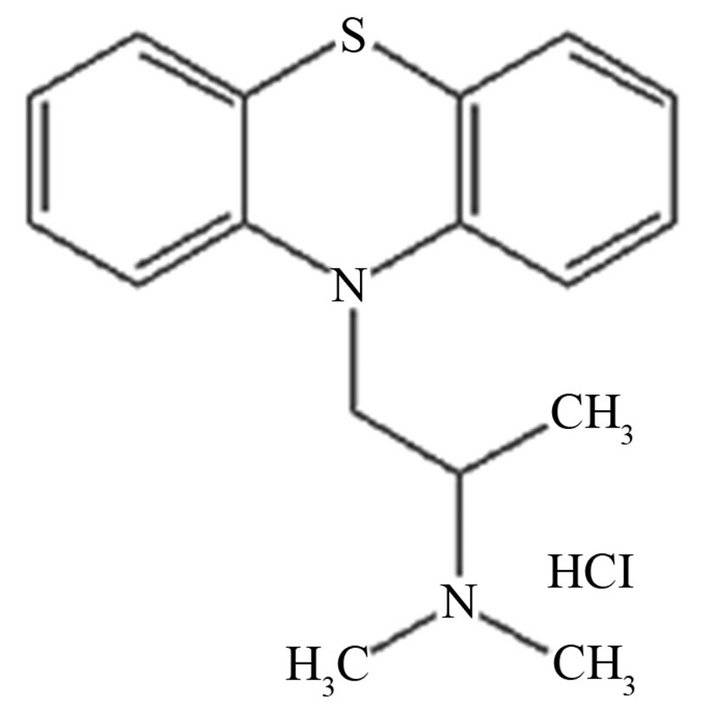
Scheme 1. Promethazine hydrochloride.
ture of the test solution and an Ag/AgCl/3M KCl reference electrode model Metrohm 6.0733.100. The electrochemical system of the measurements may be represented as follows: CMCPE/test solution//reference electrode.
2.2. Materials and Reagents
All reagents were of analytical reagent grade. Doublydistilled water was used throughout all experiments. Promethazine hydrochloride was provided by Alexandria Pharmaceutical Industries Co., Alexandria, Egypt. The Pharmaceutical preparations [Phenergan syrup, Promethazine hydrochloride 1 mg/ml] and [Phenergan syrup, Expectorant, (Promethazine hydrochloride1mg/ml, thicol 45 mg/ml and Ipecacuanha extract 3 mg/ml)] were obtained from local drug stores. Graphite powder (Fluka). Sodium tetraphenyl borate NaTPB, dioctyl phthalate DOP, dibutyl phthalate DBP, o-nitrophenyl octyl ether ONPOE, diisononyl phthalate DINP and paraffin oil PO were obtained from Aldrich chemical company.
2.3. Preparation of the Ion Exchanger
The ion exchanger, Promethazine tetraphenyl borate PmTPB, was prepared by adding 50 ml 0.01 M of promethazine hydrochloride to 50 ml 0.01 M of NaTPB. The formed white precipitate was filtered off, washed thoroughly with doubly-distilled water, dried at room temperature and ground to fine powder. This ion exchanger was used as a modifier for the carbon paste electrode which was prepared as described elsewhere [32]. The composition of the ion exchanger was confirmed by elemental analysis at the Micro-Analytical Center, Faculty of Science , Cairo university, to be 1:1 [Pm:TPB]. The calculated percentages of C, H, N and S were 81.4%, 6.7%, 4.6% and 5.2% and the found ones were 80.5%, 6.5%, 5.1% and 4.9%, respectively.
2.4. Construction of the Electrode [32]
A Teflon holder (12 cm length) with a hole at one end (7 mm diameter, 3.5 mm depth) for the paste filling served as the electrode body. Electrical contact was made with a stainless steel rod through the center of the holder. This rod can move up and down by screw movement to press the paste down when renewal of the electrode surface is needed. The modified paste was prepared by mixing the weighed amount of Pm-TPB ion pair and high purity graphite with acetone. The mixture was homogenized, and the weighed amount of DOP was added to the mixture. Very intimate homogenization is then achieved by careful mixing with glass rod in agate mortar. The readyprepared paste was packed into the hole of the electrode body. The carbon paste was smoothed onto paper until it had a shiny appearance and the electrode was used directly for potentiometric measurements without preconditioning requirements.
2.5. Recommended Procedures
2.5.1. Construction of the Calibration Graphs
Suitable increments of standard Pm.Cl solution were added to 50 ml of water to cover the concentration range from 1.0 × 106 to 1.0 × 102 M. For higher concentrations, separate solutions were used. In this solution, the sensor and the reference electrodes were immersed and the emf was recorded after 10 seconds, at 25˚C, after each addition, and plotted versus—log [Pm.Cl].
2.5.2. Effect of pH on the Electrode Potential
The effect of pH of the test solution on the potential values of the electrode system concentrations of 1.0 × 102 and 1 × 103 M of Pm.Cl was studied. Aliquots of the drug solution [50 ml] were transferred to 100 ml cell and the tested electrode in conjunction with an Ag/AgCl/3M KCl reference electrode, and a combined glass electrode were immersed in this solution. The potential and pH readings were simultaneously recorded. The pH of the solution was varied over the range of 1.0 - 12.0 by addition of small volumes of 0.1 - 1.0 M HCl and/or NaOH solutions. The mV-readings were plotted against the pH of the above mentioned concentrations.
2.5.3. Potentiometric Determination of Promethazine Hydrochloride
The standard addition method was applied [33], in which small known increments of standard Pm.Cl solution 0.1 M was added to 50 ml aliquot samples containing various amounts of pure Pm.Cl or the pharmaceutical preparations. The change in potential reading was recorded for each increment and used to calculate the concentration of Pm.Cl in the sample solution using the following equation:

where: CX and VX are the concentration and the volume of the unknown, respectively, Cs and VS are the concentration and the volume of the standard, respectively, S is the slope of the calibration graph, and ∆E is the change in milli volt due to addition of the standard.
For analysis of pharmaceutical preparations, appropriate volumes from syrup, containing 5.00, 10.00, 15.00, 20.00, 25.00 and 35.00 mg of promethazine were taken as samples and completed to 50 ml by doubly distilled water and the standard addition technique was applied as described above.
In potentiometric titration, aliquots containing 16.0 - 96.0 mg of Pm.Cl were transferred into 100 ml titration cell and diluted to 50 ml with distillated water. The resulting solutions were titrated against 10−2 mol/L NaTPB solution. The end points were determined from the conventional S-shaped curves and the first derivative method. The same procedure was applied for the pharmaceutical preparations.
3. Results and Discussion
3.1. Composition and Characteristics of the Electrode
In preliminary experiments carbon paste electrodes with and without ion-exchanger were prepared. The paste with no exchanger displayed no measurable response toward promethazine cations, whereas, in the presence of the proposed ion-exchanger Pm-TPB, the optimized sensor demonstrated appreciable response and remarkable selectivity for Pm+ cations over several common organic and inorganic cations. We examined also the influence of the plasticizer type and concentration on the characteristics of the electrode using four plasticizers with different polarities including DBP, DINP, ONPOE and DOP (Figure 1). An electrode modified by 0.6 % Pm-TPB and 6.2 % DOP as a plasticizer has a slope of 58 mV per concentration decade (Table 1) and a linearity range of 1 × 10−5 to 6 × 10−2 M of Pm.Cl. This composition was chosen for carrying out the subsequent studies and its electrochemical performance characteristics were systematically evaluated according to IUPAC recommendations [34].
3.2. Electrode Response
Response characteristics of the electrode under investigation are summarized in (Table 2). Detection limit was evaluated according to IUPAC recommendation [34].
3.3. Effect of pH of the Test Solution
Representative curves for the electrode are shown in
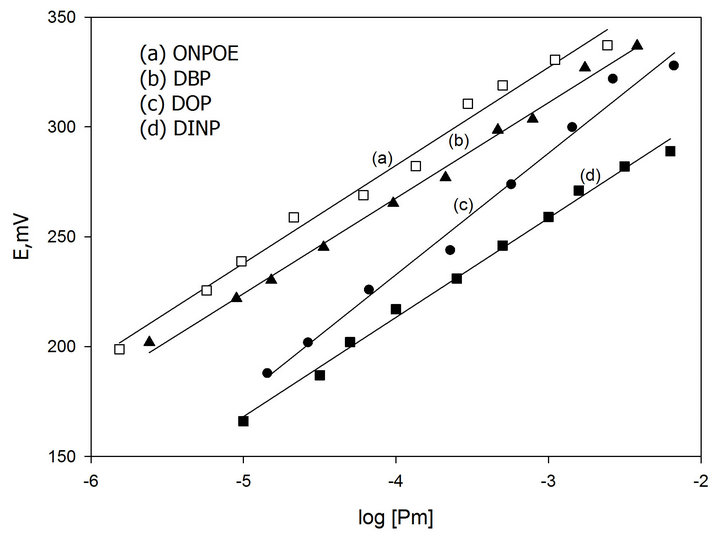
Figure 1. Effect of type and concentration of plasticizer on potential response of Pm-TPB MCPE.
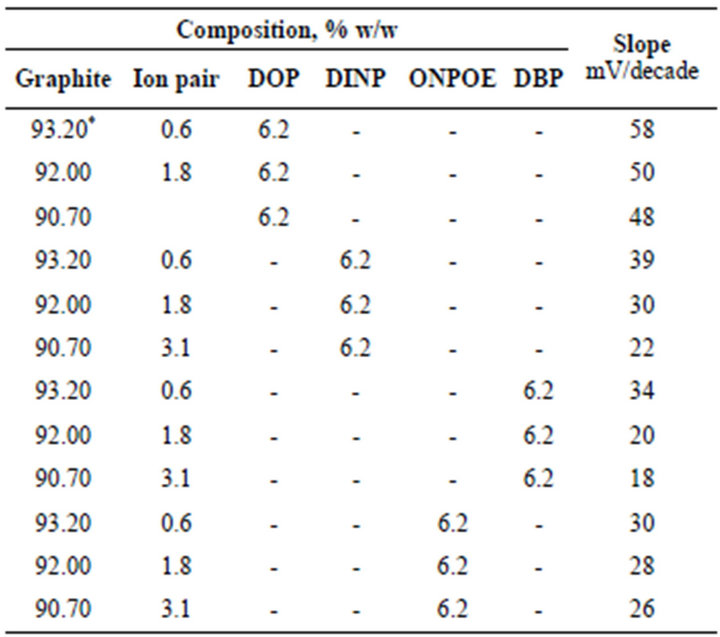
Table 1. Composition of the Pm modified carbon paste electrode and the corresponding slopes of the calibration graphs at 25˚C ± 0.1˚C.
*Optimum composition.
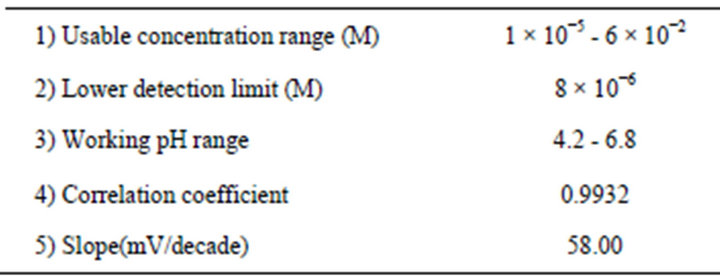
Table 2. Response characteristics of the promethazine modified carbon paste electrode.
(Figure 2). The results indicate that at pH range of 4.2 - 6.8, the potential of the electrode is independent of the value of pH. At pH values lower than 4.2, the potential slightly increased, which can be related to penetration of hydronium ion, while the decreased potential that took place at pH values higher than 6.8, is most probably attributed to the formation of the free promethazine base in the test solution.
3.4. Selectivity of the Electrode
The selectivity coefficients 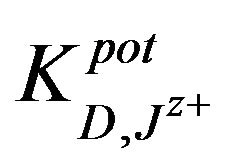 were evaluated by separate solution method SSM [35] for ions with charge numbers, applying the following equation:
were evaluated by separate solution method SSM [35] for ions with charge numbers, applying the following equation:

where E1 and E2 are the electrode potentials in 10−2 M Pm.Cl and in 10−2 M interferent Jz+ solutions, respectively and S is the slope of the calibration graph.
The,  was also determined by the matched potential method MPM [36] for all types of ions and mole-
was also determined by the matched potential method MPM [36] for all types of ions and mole-
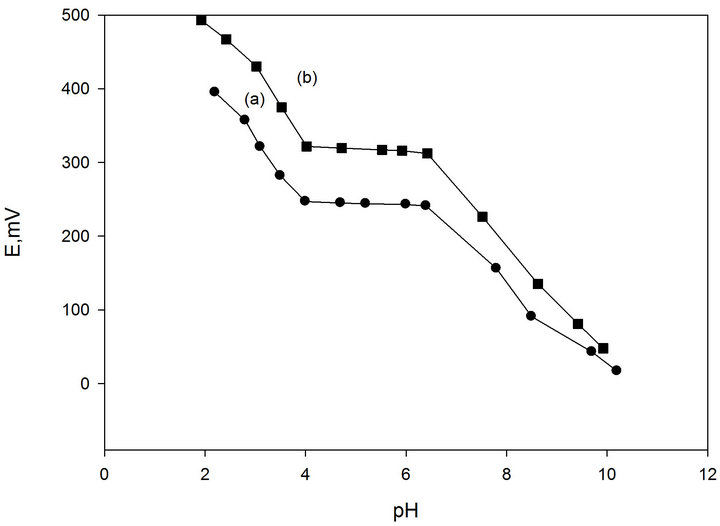
Figure 2. Effect of pH of test solution, 10−3 M (a) and 10−2 M (b) Pm.Cl on the potential response of Pm-TPB CMCPE.
cules. In this method, the potentiometric selectivity coefficient was defined as the activity ratio of primary and interfering ions that gives the same potential change under identical conditions.
At first, a known concentration (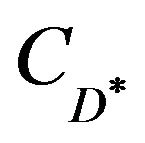 ) of the primary ion is added to a reference solution that contains a fixed concentration (CD) of primary ions, and the corresponding potential difference (∆E) was recorded and a solution of an interfering ion was added to the reference solution until the same potential change (∆E) is recorded. The change in potential produced at the constant background of the primary ion must be the same in both:
) of the primary ion is added to a reference solution that contains a fixed concentration (CD) of primary ions, and the corresponding potential difference (∆E) was recorded and a solution of an interfering ion was added to the reference solution until the same potential change (∆E) is recorded. The change in potential produced at the constant background of the primary ion must be the same in both:

where, CJ is the concentration of the interfering ion. The determined selectivity coefficients (Table 3) reflect a very high selectivity of the investigated electrode toward promethazine cations, with respect to many common inorganic cations, sugars and amino acids which are frequently present in biological fluids and pharmaceutical preparations. The inorganic cations did not interfere due to the differences in their motilities and permeabilities as compared to Pm+ cations.
4. Analytical Applications
Promethazine was determined, in pure solutions and in pharmaceutical preparations, potentiometrically using the investigated electrode by both standard addition and potentiomertic titration methods. Representative titration curves are shown in (Figure 3). The mean recovery and the relative standard deviation values, for pure solution and pharmaceutical preparations, were calculated and summarized in (Table 4).
In pharmaceutical analysis, it is important to test the selectivity toward the excipients and fillers added to the pharmaceutical preparations. It is clear from the results
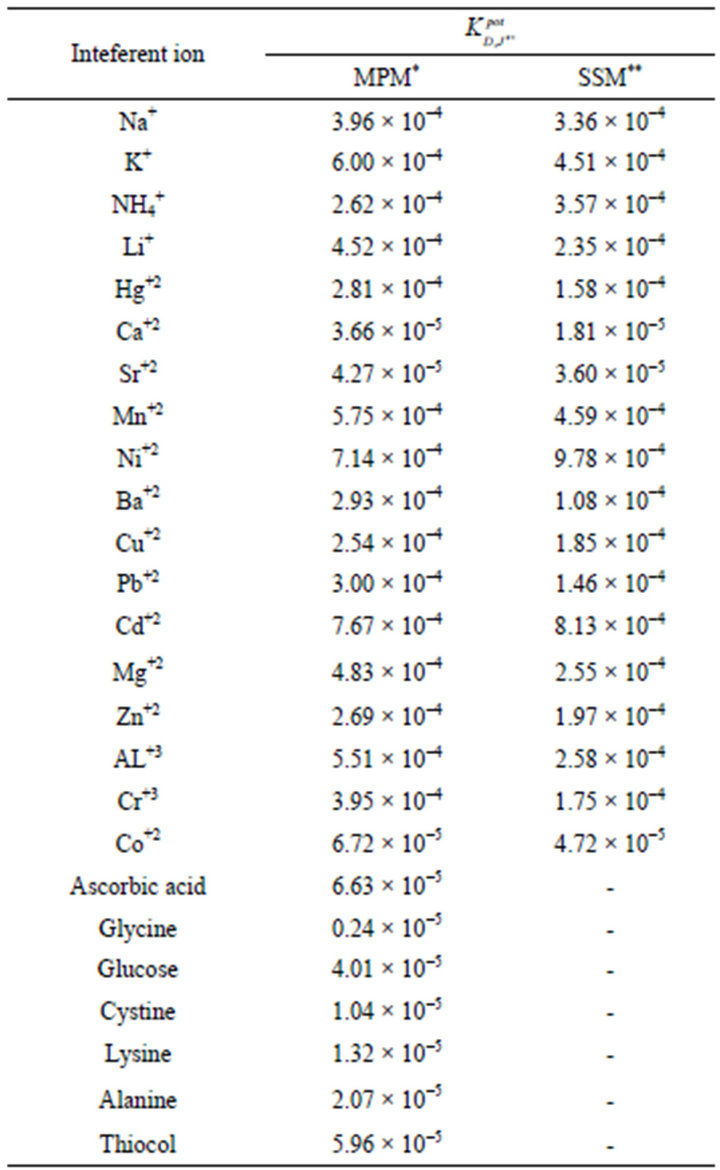
Table 3. Selectivity coefficients of Pm-TPB CMCP electrode.
*SSM: Separate Solution Method; **MPM: Matched Potential Method.

Table 4. Determination of promethazine in pure form and in pharmaceutical preparations by applying standard addition and potentio-metric titration methods.
*Taken (mg per 50 ml); **RSD, relative standard deviation (four determinations).
obtained for pharmaceutical preparations (Table 4) that these components and excipients do not interfere as indicated by high recovery and low standard deviation values. The results of the proposed electrode indicate high accuracy and precision of the present work (Table 5). These results were compared with those obtained from the official method (based on non aqueous titration of the drug with 0.1 N perchloric acid in the presence of anhydrous acetic acid and acetic anhydride and the end point was determined potentiometrically [37]) by applying of F-and t-tests [37]. The calculated F-values were found to be in the range 2.68 - 2.82 which were lower than the tabulated value [9.12 at 95% confidence limit and 4 degrees of freedom] While, the t-values were found in the range 4.19 - 5.17 which were lower than the tabulated value [5.84 at 99.9% confidence limit and 4 degrees of freedom]. This means that the present methods were of comparable precision to that of the official method and there was no significant difference between the mean values obtained by both methods. In order to establish whether the proposed methods exhibit any fixed or proportional bias, a simple linear regression of the taken milligrams against found was calculated [38] and the results of statistical treatments of the data were shown in (Table 5).
5. Conclusion
The proposed electrode based on Pm-TPB ion exchanger as the paste modifier offer a valuable technique for the determination of promethazine in pure solution and in pharmaceutical preparations. The inherent advantages of the proposed electrode were its rapid response, simple operation, and precise results, low cost, applicability over reasonable pH range with minimal sample pretreatment and direct application to the determination of promethazine in complex matrix without prior separation. The proposed methods of determination with the prescribed electrode were simple, sensitive, highly specific and had advantages over the previously described procedures for Pm.Cl determination since the interferences of the excipients and impurities were nullified.

Table 5. Statistical treatment of the data obtained for Promethazine using modified carbon paste electrode in comparison with the official method.
S: Slope of the regression line of mg taken versus mg found. I: intercept of the regression line. R: Correlation coefficient of the regression line. aFtabulated at 95% confidence limit. bt-tabulated at 99.9% confidence limit.
NOTES